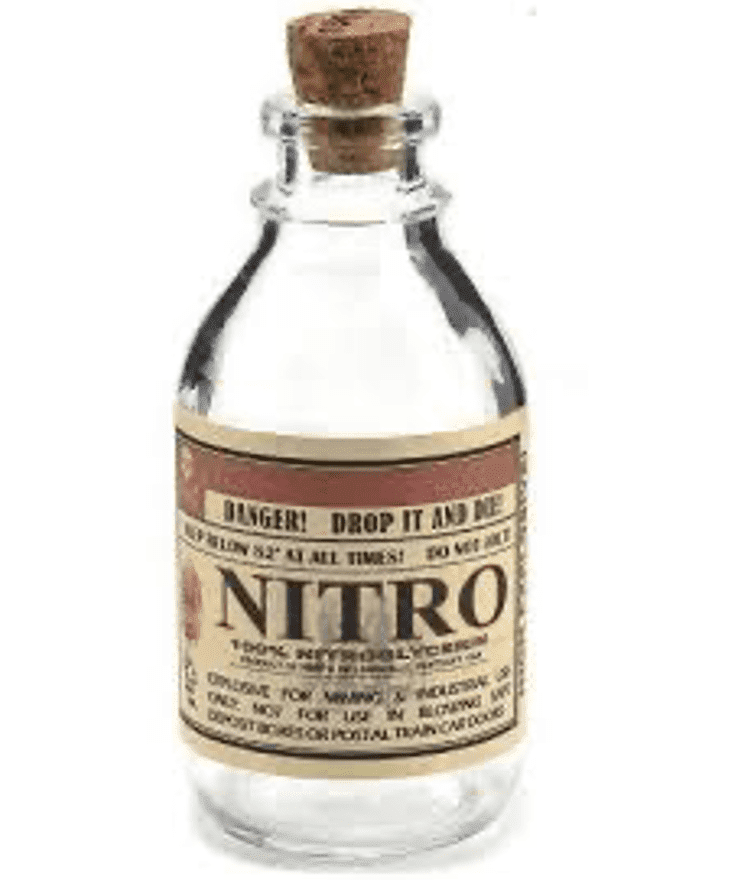Guidelines, Nitrates and Right Ventricular Infarction
Cardiac Guidelines warn us against the use of Nitrates in the presence of Right Ventricular Infarction; the main concern being inducing hypotension. Isolated right ventricular infarction is rare, but does occur in 30-50% of cases of inferior infarction. The rarity of the condition is due to the right ventricle being thin walled, resulting in decreased myocardial oxygen demands, as well as being perfused throughout the cardiac cycle, unlike the left ventricle which is perfused during diastole.
Patients may present with hypotension, clear lung fields and distended neck veins. There may also be unexplained hypoxia, even with high levels of supplemental oxygen. This occurs due to the effects of right to left shunts via patent foramen oval or atrial septal defects becoming more pronounced as right sided pressures increase.
The blood supply to the right ventricle is from the right coronary artery, which also supplies the sino-atrial node and in a large number of cases, the atrioventricular node as well, explaining why we sometimes see bradycardia and blocks in patients with right coronary artery occlusion.
Patients with right ventricular infarction will be pre-load sensitive, due to poor ventricular contractility and are at significant risk of severe hypotension when preload is decreased. This is the foundation for the avoidance of Nitrates.
To read more on right ventricular involvement in infarction and pulmonary embolism go to ‘The Right Ventricular Spiral of Death‘.
Where is the evidence?
It appears that the evidence used in the guidelines for the avoidance of Nitrates in right ventricular infarction, has mostly come from one small 1989 study of 40 patients, who received unknown dosages of Nitrates (1).
Now a new systematic review(2) is asking us to look at this more closely. It has changed my approach…… a little.
What They Did
This was a systematic review and meta-analysis of five studies with a total of 1113 patients. It aimed to look at whether Nitrate administration in right ventricular myocardial infarction(RVMI) increased adverse events(primarily hypotension) when compared to myocardial infarctions in other regions.
What They Found and Limitations
- All studies included, looked at a combination of inferior and RVMI ie., not isolated RVMI.
- Studies were not of a high quality ie., three retrospective cohort studies and two uncontrolled before-after studies.
- The definitions of hypotension varied ie., some used <90mmHg and some <100mmHg.
Comments
We know that isolated inferior myocardial events have less adverse events related to nitrate use, than infarcts in other regions(3). This is most likely related to the infarct burden being smaller. This review showed that the hypotensive effects were transient and reversible by simple measures such as stopping the drug, giving intravenous fluids and using a Tredenlenberg position. Of even greater importance was, that there were no deaths or cardiac arrests. What this might mean in practical terms is that the risks of giving nitrates to patients with inferior infarctions, when not performing right ventricular leads(as occurs in many cases), may be a little safer than we thought.
This study did not look at isolated right ventricular infarction; all cases were a combination of inferior and right ventricular infarction. One thing that did come from this study, was that it was possible to perform a meta-analyis on a 400mcg sublingual dose of nitroglycerin and it was found to have no statistically significant difference in relative risk compared to combined inferior and RVMI.
More work needs to be done, but this study indicates that there may be no difference in the rate of hypotension between different infarct regions, caused by nitrates. We need to progress carefully.
References
- Ferguson J et al. Significance of Nitroglycerin-induced hypotension with inferior was acute myocardial infarction. Am J Cardiol. 1989;64:311-314.
- Wilinson-Stokes et al. Adverse events for nitrate administration during right ventricular myocardial infarction:a systematic review amd meta-analysis. Emerg Med J 2023;40:108-113.
- McConnell AH et al. Prehospital nitroglyceryn safety in inferior ST elevation myocardial infarction. Prehospital Emerg care 2016;20:76-81.










